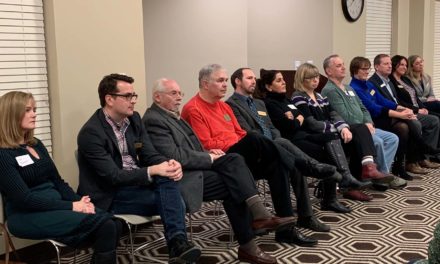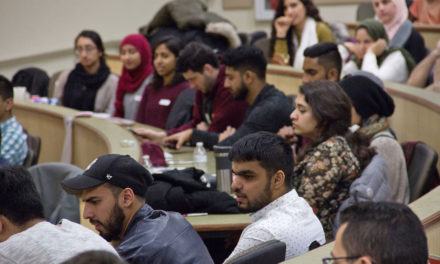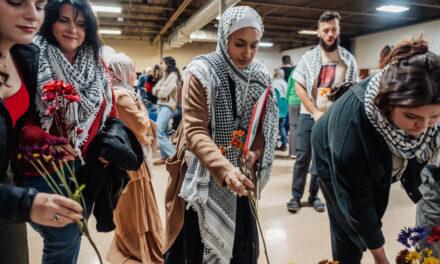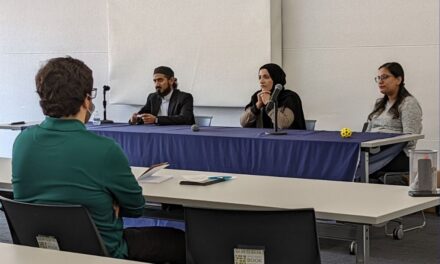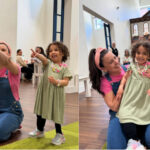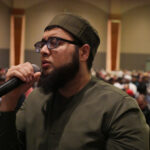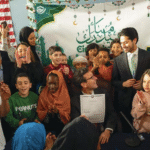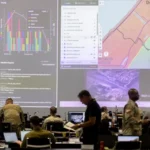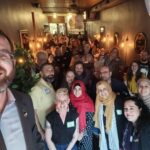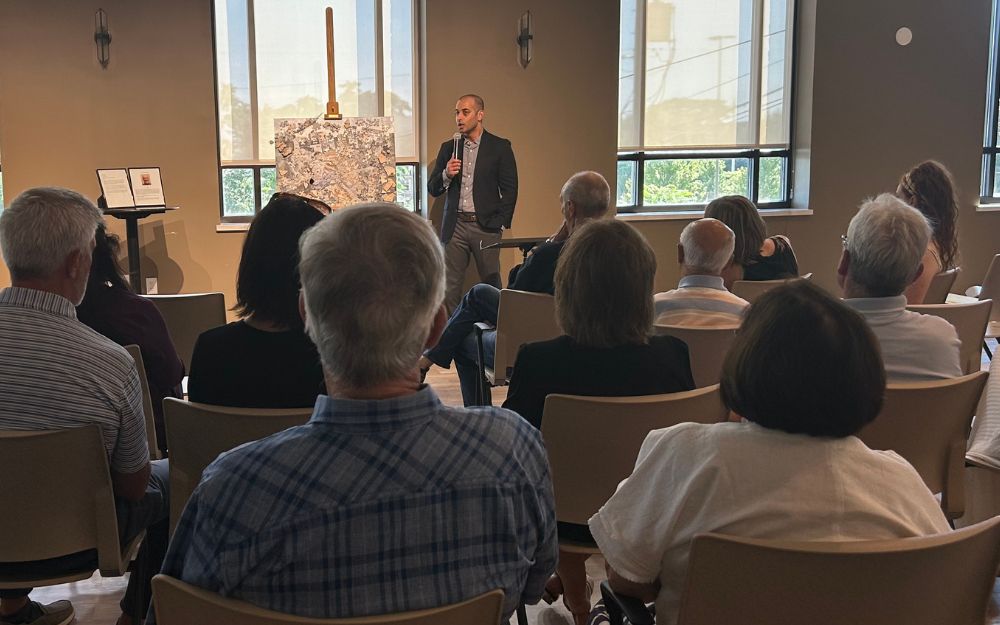
Photo by Sandra Whitehead
“Let’s not forget, this is a man-made catastrophe. It is entirely preventable,” U.S. Trauma Surgeon Feroze Sidhwa said about the “horrendous” conditions in Gaza, after serving five weeks there on medical missions.
“I’m a physician bearing witness to the deliberate destruction of a healthcare system, the targeting of my own colleagues and the erasure of a people,” American trauma and critical care surgeon Dr. Feroze Sidhwa of Stockton, California, said in testimony May 25 to the United Nations Security Council.
Sidhwa volunteered with the World Health Organization at the European Hospital in Khan Younis, Gaza, March 25 – April 2, 2024, and again from March 3 – April 2, 2025, with MedGlobal, an American Non-governmental Organization (NGO).
Neither Muslim nor Arab, Sidhwa said he felt drawn to provide healthcare in Gaza by his personal convictions. “The Constitution of the World Health Organization states ‘the health of all peoples is fundamental to the attainment of peace and security and is dependent on the fullest cooperation of individuals and states.’ I’ve taken this to heart and it is the reason I volunteer in conflict zones from Haiti to Ukraine to Gaza,” he testified.
All war zones are tragic, but Gaza is different, Sidhwa said.
Compelled to share his observations of what he calls “horrific and worsening man-made catastrophe” in Gaza, he wrote letters to the Biden and Trump administrations, and editorials in prominent newspapers. A frequent expert guest on U.S. and European news, he speaks with eye-witness authority about the “disastrous situation” in Gaza. He also travels across the country to speak in seminars and webinars on college campuses and to community organizations.
A week ago, at the request of concerned Wisconsinites, Sidhwa shared his insights with audiences in Madison and Milwaukee. Wisconsin Muslim Journal was there to bring our readers the story.
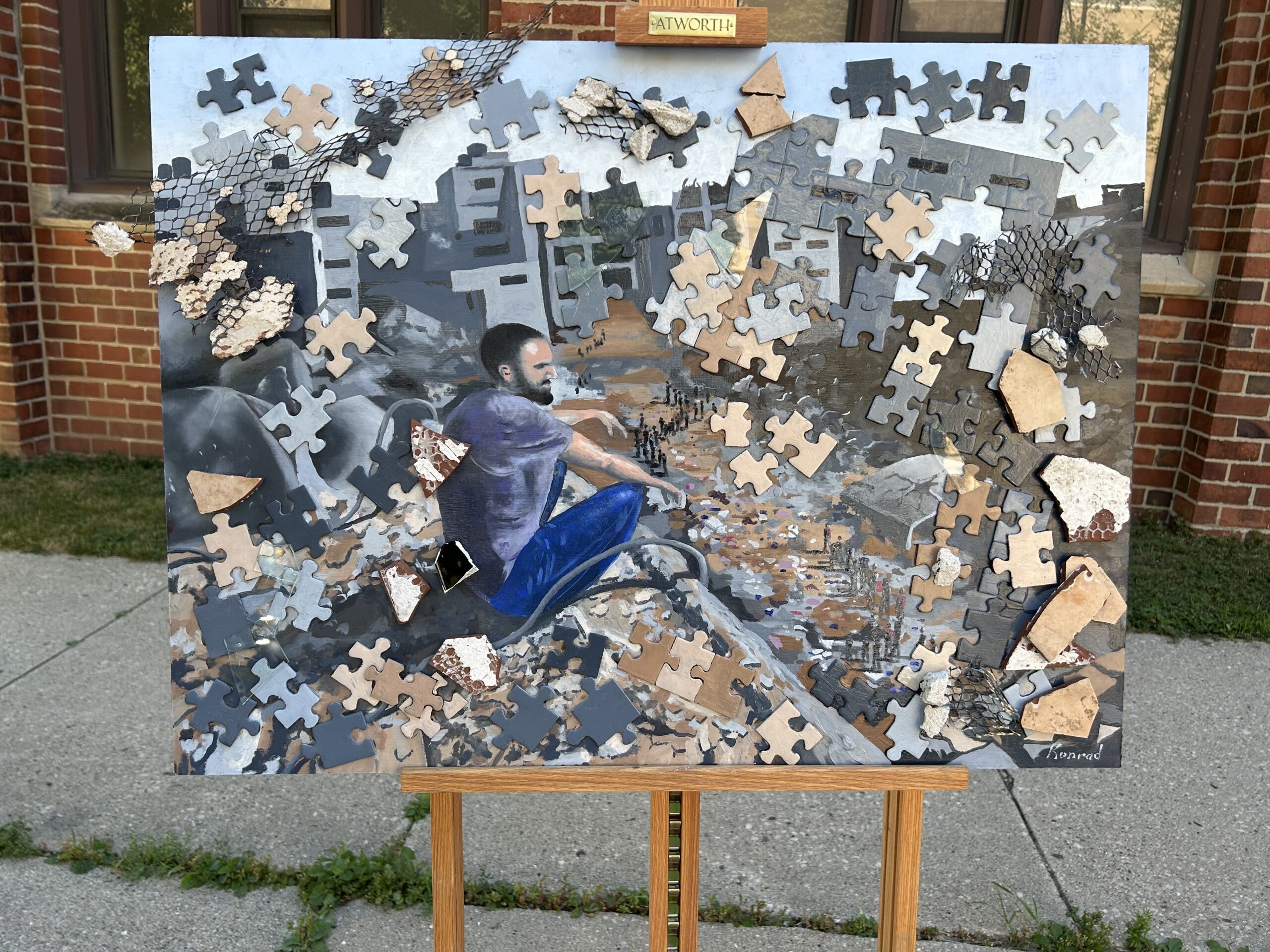
Photo by Sandra Whitehead
“Lament” by Konrad Koch of Milwaukee was inspired by a news photo Koch saw. “The central figure contemplates the devastating maelstrom in front of him … once bustling with people working, eating, talking and laughing … there was life and hope in this space like there should be everywhere on earth.”
An eye witness visits Wisconsin
Sidhwa visited Madison and Milwaukee last weekend, packing in multiple speaking engagements from Friday noon to Sunday evening. He presented his very personal and graphically detailed talk, The Ongoing Health Catastrophe in Gaza: A Trauma Surgeon’s Experience Inside Gaza’s Hospitals, to three large audiences. He spoke at the First Unitarian Society Atrium Auditorium at noon Friday and at Christ Presbyterian Church at 7 p.m., both in Madison, and at Redeemer Lutheran Church in Milwaukee, Sunday at 2 p.m.
He also joined in three discussions:
- Madison for a World BEYOND War organized “An Anti-War Café” session with Dr. Sidhwa, from noon to 3 p.m., at The Crossing in Madison.
- Leaders from member organizations of the Wisconsin Coalition for Justice in Palestine, a coalition of more than 90 Wisconsin organizations opposed to the U.S. support of Israel’s genocide in Gaza, met with Dr. Sidhwa Sunday for a lunch meeting to discuss strategies for moving forward in calling for a permanent ceasefire and aiding the Palestinian people. WCJP formed in October 2023.
- At Dr. Sidhwa’s request, medical professionals stayed after his final Milwaukee presentation to talk about ways to collaborate to oppose attacks on doctors, nurses and other medical staff in Gaza. Janan Najeeb, founder of WCJP, encouraged him to share strategies that medical professionals and others in Wisconsin can implement to bring peace and benefit the people of Gaza.
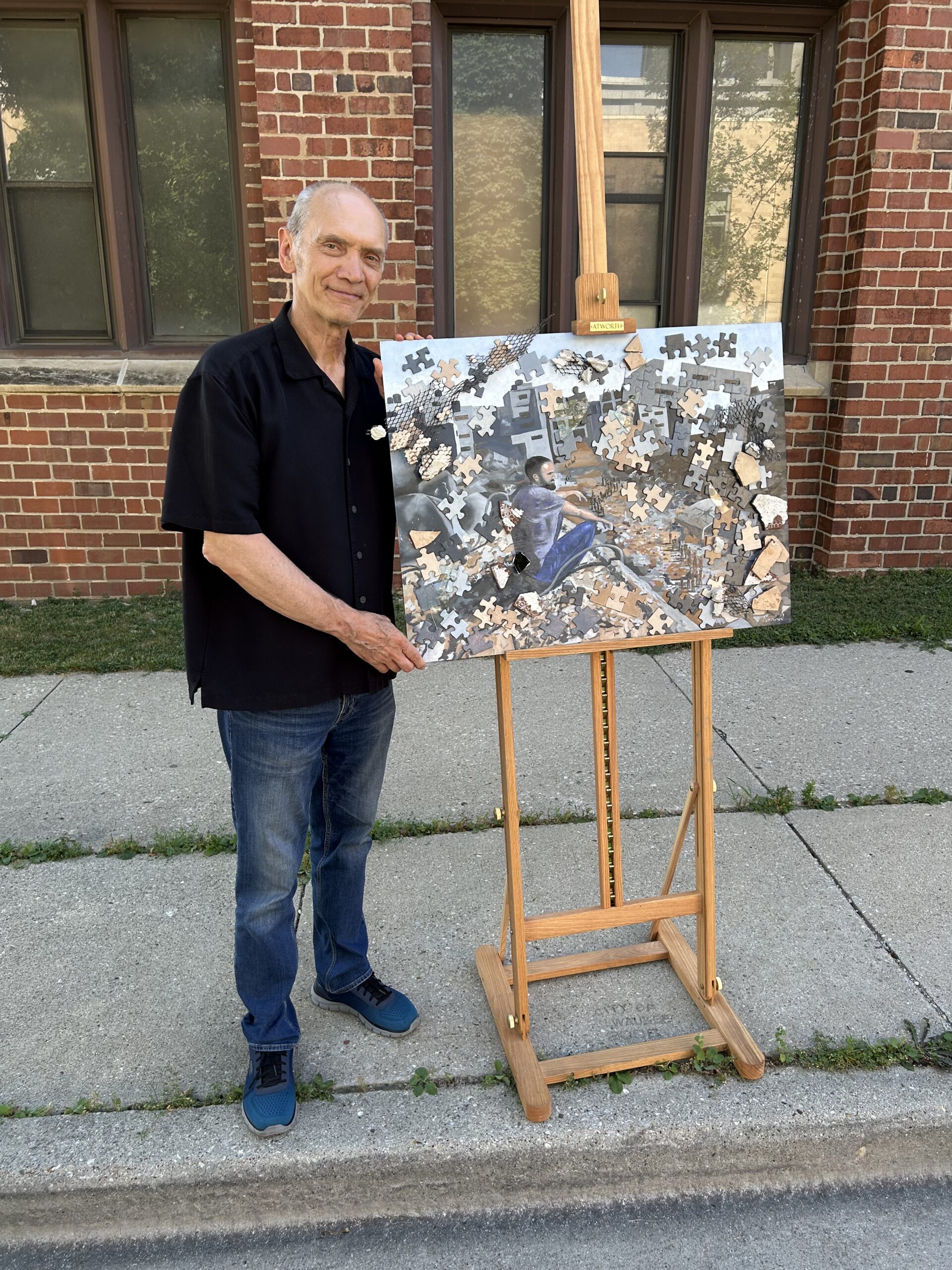
Milwaukee artist Konrad Koch with “Lament”
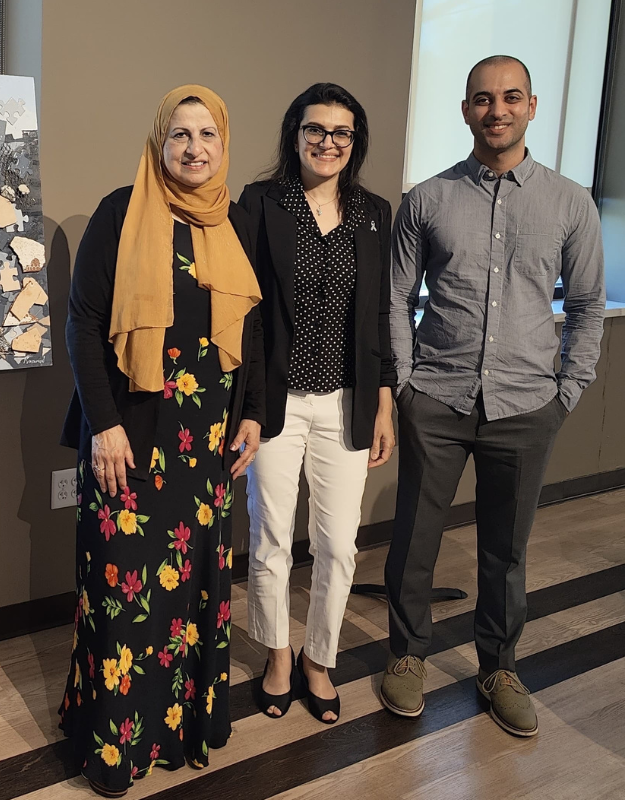
WCJP founder Janan Najeeb, Hanadi BuAli, M.D. and Feroze Sidhwa, M.D.
Jewish Voice for Peace-Madison invited Dr. Sidhwa to Wisconsin. Esty Dinur, a radio, print and online journalist with a weekly show on WORT FM, a member of Jewish Voice for Peace-Madison and founder of Veterans for Peace-Madison said, “I want to tell you, when we invited him, we asked him how much money we needed to raise to bring him here and provide some per diem (for daily expenses) and his answer was, ‘Nothing.’ He paid to get here. He is paying his own way. We have not given him a penny.”
Dinur encouraged the audience at Christ Presbyterian Church to still contribute, as JVP-Madison and Madison-Rafah Sister City Project are raising money for the Middle East Children’s Alliance, an organization operating in Gaza they have worked with for many years.
The Wisconsin Coalition for Justice in Palestine and Wisconsin Christians for Justice in Palestine invited Dr. Sidhwa to bring his testimony to Milwaukee.
Other co-sponsors of Dr. Sidhwa’s visit to Wisconsin included UW-Madison’s Middle East Studies Program, the Haven Wright Center for Social Justice, WORT FM and First Unitarian Society.
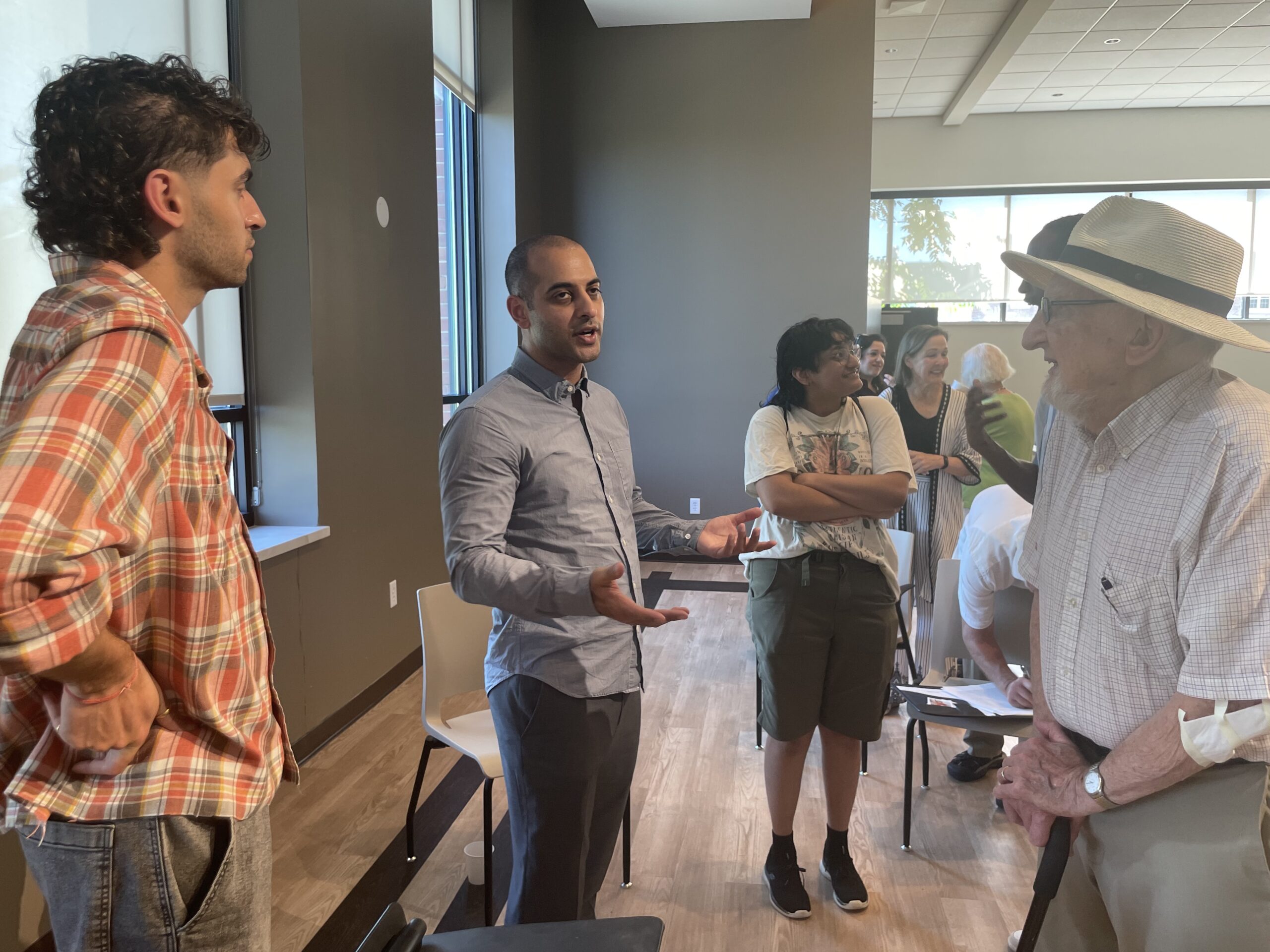
Feroze Sidhwa, M.D., (center) speaks with Rev. Joseph Ellwanger (right), a leader in MICAH, and others after his presentation at Redeemer Lutheran Church in Milwaukee.
What Dr. Sidhwa saw in Gaza
In his presentations in Wisconsin, Dr. Sidhwa shared two cases he experienced that he said “illustrate what we have done to this place.” Below is a summary of his account.
The first was a 9-year-old girl named Juri. Two weeks before I met her, her parents received a phone call and also the Israelis dropped fliers on their neighborhood telling them they had to evacuate from Khan Younis.
They packed up their children and went south to Rafah, where they dropped the children off with their grandparents while they went to look for food, water and other supplies. When they returned, the house had been blown up. The grandparents were dead and the children were distributed to different hospitals. Juri had gone to the European Hospital where I met her.
She had been badly injured and the team that was there had patched her up as best they could. It was obvious she was going to be dead in a few hours. Her blood pressure was undetectable. Mentally, she was completely altered. I thought she was 4 years old because of the way she was acting. We decided to take the risk of anesthetizing her because we couldn’t treat her without tormenting her. We found she had horrendous wounds on her left buttock and right leg, and a broken arm but that was the least of her problems. The wound on her left buttock was so deep, it cut through to the bones of her pelvis and it was covered with maggots.
She did fine after the operation; her sepsis eventually resolved. But we were pretty upset. Whoever did the initial operation at least had to be told they were not doing it correctly. What we found was the orthopedic surgeon who was supposed to be on call that day was dead so the medical students and residents who were left to take care of it did the best they could.
This case illustrates the violence that has been directed towards children. It was absolutely shocking to see. About half of my severely injured patients were preteens, 12 and under.
The daily, widespread shooting of children in the head and chest was really striking.
This is not something the Israelis are doing. It is something we are doing. We have to understand that. We are the ones funding it. Without our support, it wouldn’t be happening.
The second case was a 29-year-old orthopedic surgical nurse at the Indonesian Hospital in Northern Gaza named Thamer. In late November 2023, he was in the operating room. He was probably closing the wound at the end of the case when Israeli soldiers came into the OR and said he had to go with them. He told them, ‘Just let me finish closing this wound.’ So, the Israelis shot him in the knee and left him on the operating room floor.
His own team came in and picked him up, put an external fixator on his leg and admitted him in the hospital. But what happened next is really quite horrible. The Israelis raided the hospital again and took him from his bed to one of the network of torture chambers they had built for people who come out of Gaza. He was strapped to a table for 45 days, fed a juice box every day or every other day. He was medically neglected to such a degree that the pin sites of the external fixator became infected, which is extremely uncommon. He was beaten so badly that his right eye had to be removed when was let out of the prison. When he was let go, he was dumped naked on the side of a road, which is how most Palestinian prisoners are released. Somebody found him, picked him up and brought him to European Hospital.
When I met him, he was still in septic shock. We figured that it was actually the pin sites on his leg. We decided to address them but the operating room staff told us there was no time. About 250 people admitted to this hospital needed daily operative wound care. In other words, they needed to be taken from their room, taken to the operating room, put on our anesthesia. I need to do something with a knife. And then they need to go back and probably do that again two or three days later. There are only four operating rooms at European Hospital. It’s impossible to do. This is a 250-bed hospital with 1,500 people admitted.
There are another 1500 people sheltering just in the corridors of the hospital. And 10,000 people sheltering on the grounds of the hospital. So, you can imagine the sewage system backs up literally every day. The radiology department on the first floor would flood with sewage, and people were sleeping on the ground there when this would happen. It was awful. Even basic cleanliness was completely impossible, forget sterility.
Nevertheless, we were able to address his pin sites aggressively and gave him antibiotics that we had brought with us. That was when you could take things into Gaza. By the time we left, we were able to resolve his sepsis. But he’s 29 and looks 80. His hair is gray or gone. His temporal muscles are sunken in. He did recover somewhat physically but mentally and spiritually he’s a completely broken human being.
That’s the kind of thing we’re doing to the Gaza Strip. And I stress we. The Israelis can’t do anything without the bombs, the logistics, the weapons, the jet fuel, the maintenance support, everything that we send to make sure that they, that Israeli pilots can continue to pilot American planes, dropping American bombs with American intelligence and American jet fuel. If we stop participating, it’ll stop immediately.
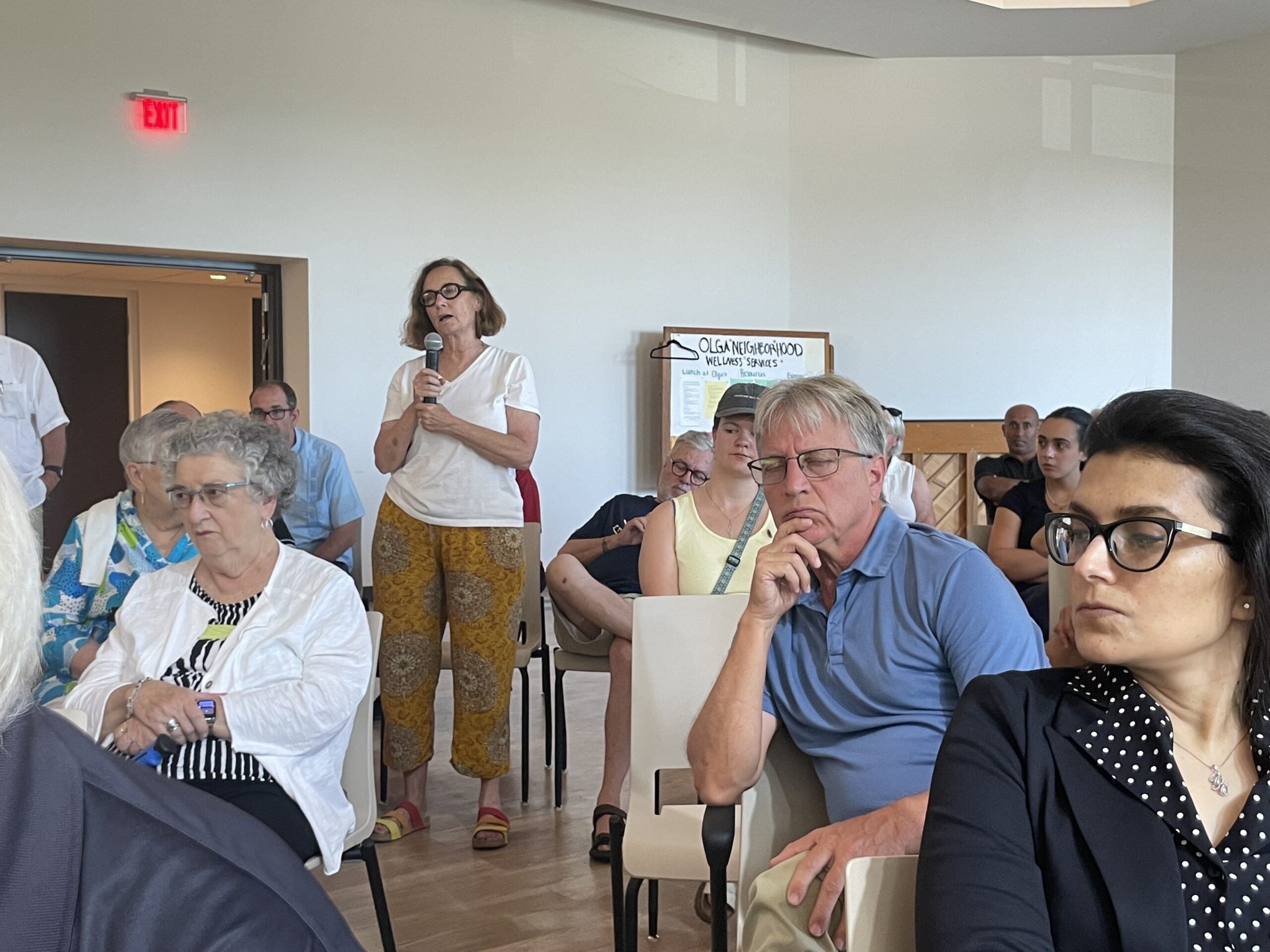
Jean Grow, Ph.D., Marquette University Professor Emeritus of Strategic Communication and author of Jean Grow on Substack, shared her experience of visiting the West Bank with the Palestinian American Research Center 10 years ago. “What I saw in the West Bank was horrifying. At daycare centers, I saw shell casings used to water their little gardens that had the stamp from the bomb-maker in Pittsburgh.”
Dr. Sidhwa’s ongoing testimony
Not only did Dr. Sidhwa bear official witness to the UN Security Council; he was the primary author of two open letters to the Biden-Harris administration (updated and sent Nov. 15 to the Trump transition team).
He takes his message directly to the public, speaking at seminars/webinars at Harvard, MIT and other community events around the country and through numerous editorials, including in the New York Times, Politico, Columbia Daily Spectator and ThinkGlobalHealth, the latter on war crimes, co-authored with Leonard Rubenstein, the John Hopkins Bloomberg School of Public Health Distinguished Professor of the Practice.
In addition, Sidhwa appeared on CNN’s Amanpour, MSNBC’s Ayman Mohyeldin Reports, Democracy Now!, CNN International, Australia Broadcasting Corporation, DropSite News, BBC World News, as well as many radio programs and podcasts, and is often quoted in mainstream and alternative media.
With updated statistics and examples, he repeats the same message he delivered to the UN Security Council:
In Gaza, I operated in hospitals without sterility, electricity or anesthetics. Surgeries took place on crowded and filthy floors. Children died not because their injuries were unsurvivable, but because we lacked blood, antibiotics and the most basic supplies that are readily available in any large hospital anywhere else in the world.
I did not see or treat a single combatant during my five weeks in Gaza. My patients were six-year-olds with shrapnels in their heart and bullets in their brains, and pregnant women whose pelvises had been obliterated and their fetuses cut in two while still in the womb.
The medical system has not failed. It has been systematically dismantled through a sustained military campaign that has willfully violated International Humanitarian Law. Civilians are now dying not just from constant airstrikes, but from acute malnutrition, sepsis, exposure, and despair.
Between my two visits to Gaza, I witnessed a sharp decline in patients’ health, driven not just by injury, but by worsening hunger and malnutrition that left their bodies weaker, their wounds slower to heal and their survival far less certain.
Let’s not forget, this is a man-made catastrophe. It is entirely preventable. Participating in it or not, allowing it to happen is a choice. This is a deliberate denial of conditions necessary for life: food, shelter, water and medicine. Preventing genocide means refusing to normalize these atrocities.
